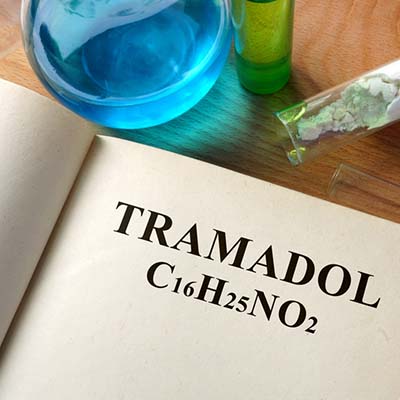
Comparing Tramadol Vs Oxycodone And Other Painkillers
Painkillers are invaluable to help manage both chronic and acute pain, but aside from their names, what are the differences between them? In this piece, we review and compare the most common strong painkillers, compare drugs such as tramadol vs oxycodone, and go over tips to take them safely.
Table of Contents:
Understanding how drugs get their names
Prescription drugs have numerous names, which can make researching them difficult. Once drugs are approved by the Food and Drug administration, they typically have at least 3 names:
- The chemical name of the drug, typically complex and shortened to a shorthand version among researchers
- The official (generic) name
- One or more brand names
A well-known example is Acetaminophen, which is the generic name of the drug best known as Tylenol.
Similarly, a search for “Tramadol vs. Ultram” will reveal that Tramadol is the generic name, while Ultram is a brand name for the same drug. Tramadol is also marketed under the brand name Conzip.


What it treats
It treats moderate to moderately severe pain and is typically prescribed after surgery or as part of treatment for cancer, musculoskeletal diseases, or nerve-related pain.
How it works:
Tramadol is a synthetic (man-made) opioid, working with the central nervous system to change how your brain senses pain. It functions similarly to endorphins, binding to nervous system receptors and decreasing pain messages being sent to the brain.
Tramadol is available in a number of forms, including regular and extended-release tablets and capsules and liquid form.
Precautions:
If you have a history of breathing problems or health conditions related to the respiratory system, Tramadol can cause life-threatening problems, so be sure to discuss this with your doctor if tramadol comes up. The risk of breathing issues also can be caused by interactions with other drugs or substances, including alcohol.
The drugs that cannot be mixed with tramadol span a wide variety of health issues, including even some vitamins and anti-fungals, so be certain to disclose all drugs you’re currently taking to your doctor. Tramadol can also cause seizures, drowsiness, and can affect coordination, so you should avoid driving or operating machinery until you’re fully aware of its effects on you.
Compared to other opioids, tramadol has less addictive potential, which is why it’s a schedule IV substance whereas many other opioids are schedule II substances. It’s important to stress, however, that tramadol can be habit forming and must be used and prescribed with caution. In addition to pain relief, tramadol also leaves people feeling more relaxed and happy.
Tramadol vs Oxycodone
Common brands/alternate names
OxyCONTIN, Roxicodone, Oxecta

What it treats
Moderate to severe pain; also acts as a cough suppressant
How it works
Oxycodone, aka oxy, is a semi-synthetic opiate. Doctors aren’t certain of how it exactly works, but believe that it stimulates opioid receptors in the brain to increase pain tolerance. Additional effects include drowsiness, reduced anxiety/calmness, and euphoria. Oxycodone is available in regular and extended-release tablets and capsules, as well as liquid form.
Precautions
Like Tramadol, Oxycodone can cause emergent breathing issues when combined with certain medical conditions or drug combinations. Mixing oxycodone with alcohol, muscle relaxants, or certain drugs for anxiety and sleeping problems can be fatal. A number of other drugs also cannot be combined with oxycodone, including MAOIs, so be sure to disclose all drugs you are taking to your doctor when discussing Oxycodone.
Oxycodone is one of the most addictive prescriptions available, and is a schedule II substance according to the FDA. While following the guidelines given by the doctor or pharmacist closely may seem inconvenient or over-zealous, it is the safest way to take oxycodone to avoid becoming dependent on it.
Drug variations
Certain drugs contain combinations of hydrocodone with other non-opioid painkillers. For example, a search for “Tramadol vs. Percocet” will bring up Oxycodone results because Percocet is a combination of oxycodone and acetaminophen.
Tramadol vs. Hydrocodone
Common brands/alternate names
Zohydro ER, Hysingla ER

What it treats
Moderate to severe pain
How it works
It is a semi-synthetic opioid that binds to pain receptors to weaken or entirely block pain signals.
In addition to reducing pain, this also results in the brain releasing more dopamine, resulting in anxiety reduction and euphoria.
Hydrocodone is available in regular and extended relief tablets and capsules, as well as in liquid form.
Precautions
Hydrocodone comes with many of the same precautions as oxycodone. It can cause severe or even fatal breathing issues for those with certain medical conditions or when mixed with alcohol or other certain substances or prescriptions like MAOIs. It can also cause drowsiness or dizziness, so you should not drive or partake in any potentially dangerous activities until you are certain how you are affected.
Like oxycodone, hydrocodone is a highly addictive drug classified as a schedule II controlled substance. Dependency can form in as little as 3-5 days, so following your prescription schedule is incredibly important to avoiding dependency.
Drug variations
Hydrocodone also has drug variations. A search for “norco vs. tramadol” will reveal Norco is a combination of hydrocodone with acetaminophen. Other variations of hydrocodone include:
- Vicodin: A combination of hydrocodone and acetaminophen (different dose than Norco)
- Lortab: A combination of hydrocodone and acetaminophen
Tramadol vs. Codeine
Common brands/alternate names
See Drug variations below

What it treats
Mild to moderate pain; also acts as a cough suppressant
How it works
Codeine is available in a wide variety of forms, including:
- Regular and extended-relief tablets and capsules
- Suppositories
- Soluble powders and tablets
- Liquids
Codeine is an opiate derived from the poppy plant. Like other opioids and opiates, it works with pain receptors to reduce pain perception, also giving pleasurable feelings of euphoria and reduced anxiety in the process.
Side effects and precautions
Codeine also comes with warnings regarding breathing issues and mixing with alcohol, MAOIs, or other drugs and substances. It can also cause drowsiness and dizziness.
Like hydrocodone and oxycodone, codeine is a highly addictive schedule II substance. Certain combination drugs including codeine may be classified as schedule III drugs since they have less codeine in them. As with all opioids, it’s important to follow your prescribed treatment plan to avoid developing dependency.
Drug variations
There are a wide variety of combination drugs including codeine, especially in drugs meant to treat respiratory illness. Sometimes these are existing drugs that incorporate codeine for more serious illnesses, like Tylenol with Codeine. Others, however, may not have names that make their codeine content obvious, so it’s important to discuss concerns you may have regarding codeine with your doctor.
Tramadol vs. Dilaudid
Common brands/alternate names
Dilaudid is a brand name of Hydromorphone hydrochloride. Other brand names include Exalgo and Palladone.

What it treats
Hydromorphone is a very strong painkiller – stronger than oxycodone – used to treat pain from surgery, broken bones, or cancer.
How it works
Like its fellow opioids, it works with pain receptors to increase pain tolerance and releases dopamine into the brain, reducing stress and causing feelings of pleasure. Hydromorphone is available in regular and extended-release tablets, and liquid form.
Side effects and precautions
Dilaudid comes with the same precautions as other opioids, including potentially fatal breathing issues from mixing it with certain medical conditions, alcohol, or other drugs and substances, especially MAOIs. Drowsiness and dizziness are important precautions as well. If taking hydromorphone in liquid form, be aware that they may contain sugar, which could be risky for those with conditions that require limiting sugar intake, like diabetes.
Hydromorphone is a schedule II controlled substance that poses a high risk of dependency. It is 8 times more potent than morphine, and those taking it can develop a tolerance for their prescribed dose in as little as 2-3 weeks. It is essential to follow your doctor’s prescription plan to avoid long-term addiction.
The dangers of opioid addiction
Because opioids impact your brain chemistry, dependency on the drug can develop quickly even in those with no previous addiction issues.
If you find yourself finishing opioid prescriptions ahead of schedule, or trying to obtain more without a prescription, it’s important to tell your doctor right away so that you can address your mental or physical dependency and wean off the drug safely.
If you’ve been struggling with addiction to opioids for some time, but fear the idea of being trapped in a clinical setting, detoxing at home may be the answer you’ve been looking for.

Detox Safely At Home With Elite Home Detox
With Elite Home Detox, you will be assigned a care coordinator to help keep you on-track to support your recovery. Once a custom rehabilitation plan has been developed between you and your expert team, one of our team members will come to your home and stay with you as you detox discreetly in the comfort of your own home.
Once detox is complete, we will work with you to create a practical and effective aftercare plan complete with ongoing recovery support. We can also help counsel friends and family on how they can best support you in taking this next step. We’re here and ready to help. Reach out to us for a custom consultation today!


